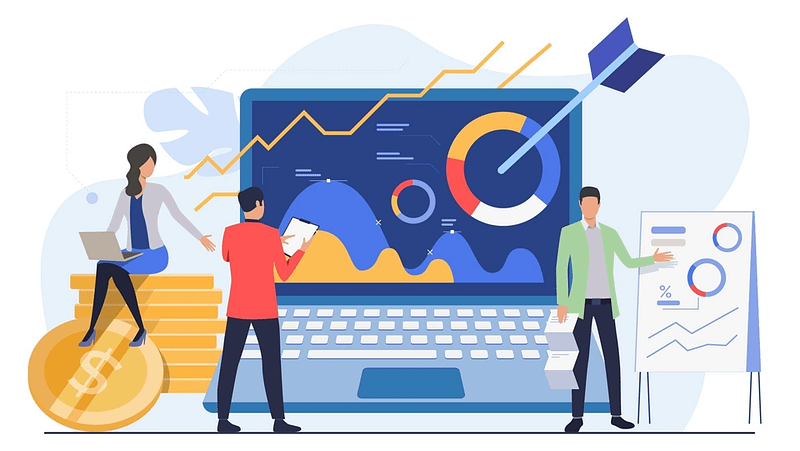Sales analytics helps you understand the performance of your business situation by providing trends and metrics.
By looking at objective data, you can set your goals and make decisions for your future sales in a more informed way.
In this article we discuss just how important it is to analyze sales, what metrics to consider, and what software to use.
Why is it important to do a sales analysis?
Sales analysis provides information about your business situation:
- What goods and services have sold the most;
- Which goods and services had no sales;
- How to compose the warehouse;
- How to measure sales force;
- How to set production capacity.
Today's market is characterized by fierce competition, complicated by a globalization of markets, so every business must be able to identify the right customers to whom to sell the right product.
Management control and data analysis prove to be a fundamental necessity for companies large and small. Monitoring sales metrics allows you to increase performance, optimize activities and direct the work of your human resources.
Sales analysis brings the company benefits in:
- Making confident decisions: decisions based on data-and not on assumptions or instincts-generate greater confidence and trust because every choice is supported by clear data.
- Determine the most important customers: identifying the most profitable customers and demographics allows you to tailor marketing tactics making them more effective.
- Knowing market trends: a sales analysis report helps to understand market opportunities, which products are doing best and which sectors are most profitable, and this is also useful when thinking about new products to bring to market.
Sales analysis: what metrics to define?
The analysis should focus on observing and improving sales performance in both the short and long term.
It is important to define specific goals in the form ofkey performance indicators (KPIs) or other metrics so that we have objective data on which to base the analysis.
To carry out an effective analysis, it is appropriate to define:
- Units of measurement (usually quantity and value);
- The different levels through which to conduct the analysis, from the most general to the particular (e.g., from total turnover to turnover by product);
- Useful intersections (example, the incidence of sales of product A on customer Y);
- The time dimension within which to consider the data and the comparison with previous data.
The metrics to be considered depend on the industry, but generally they are analyzed:
- Number of sales: knowing the number of sales and their trend allows you to understand in which direction the company is going and think about new strategies.
- Sales target: means tracking current performance against a business goal. Sales can be represented as revenue, units sold, or another relevant measure.
- Sales by period: analysis allows you to compare your current sales against previous periods, visualizing business trends.
- Average purchase value: analysis allows you to assess what the average purchase value is for each sale, understanding what your customers' average spending is and allowing you to design promotions and discounts accordingly.
Also important is the evaluation of deviations, i.e., the difference between the actual result and the desired result. For example, you can analyze deviations in terms of price, i.e., the budgeted price entered into the budget versus the actual price charged, net of discounts, rebates, or others.
What software to use for sales analysis?
Software is an important aspect of conducting sales analysis.
First of all, it is important to have software that covers the entire sales cycle, or at least can be integrated with other tools such as ERPs and CRMs: in fact, before data can be analyzed, it must be collected.
The right software must be flexible and highly functional, easy to access via intuitive dashboards. In this way, the company can develop an in-depth view of suppliers, customers, production and logistics.
Fluent BI: the solution for enterprise analytics
Fluent BI is the solution for Business Intelligence for business analysis, including financial statement analysis and sales analysis. It allows you to:
- Automate data acquisition processes from different sources;
- Consult data and information from any device, easily and interactively;
- Display only the KPIs and information you need.
Fluent BI captures sales data, allowing you to monitor and analyze customer purchases and also making comparisons with previous periods.
It also allows for a comprehensive and detailed look at the business situation by filtering data by period, product, market, and customer.
Analyze your sales and make effective decisions for your business
Choose Fluent BI for your business analysis-you will get clear, intuitive analysis and be able to make fast, informed decisions.
Contact us: we will introduce you to the software and provide a free demo.



